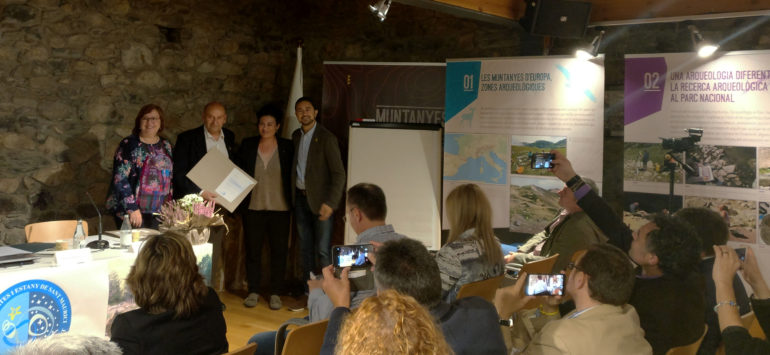The National Park of Aigüestortes i Estany de Sant Maurici received on October 20, the day of its 63rd anniversary, the certification as Starlight tReserve and Tourist Destination.
The National Park and the 10 municipalities of its area of influence (Alt Àneu, Vall de Boí, Espot, Esterri d’Àneu, La Guingueta d’Àneu, Naut Aran, Sort, La Torre de Capdella, Viella and Vilaller), that have supported this candidacy, received the certification as Starlight Tourist Destination and Reserve in recognition of their a commitment to protecting the quality of the night sky.
The Mayor Josep M. Dalmau, collected the diploma of the municipality of la Torre de Capdella in a ceremony held in the House of the park at Boí, where also participated among others, Damià Calvet, Minister of Territory and Sustainability, Rosa Maria Perelló, president of the Diputación de Lleida, and Susana Malón, of the UNESCO Starlight Foundation.
Starlight territory
 The territory of the National Park, which involves 10 municipalities, received in mid-June the visit of auditors from the UNESCO Starlight Foundation, who had already made a favorable report on the Starlight candidacy of the National Park, which recognizes the territory as an area with an excellent sky quality and an example of protection and conservation.
The territory of the National Park, which involves 10 municipalities, received in mid-June the visit of auditors from the UNESCO Starlight Foundation, who had already made a favorable report on the Starlight candidacy of the National Park, which recognizes the territory as an area with an excellent sky quality and an example of protection and conservation.
The starlight territories include the observation of the sky as part of the natural, landscape, cultural or scientific heritage, and promote the tourism of the stars.
To obtain these accreditations, measurements have been made to evaluate the quality of the night sky and also the levels of acoustic emission within the National Park and the peripheral zone. According to the Starlight Foundation, the analysis of these measurements shows that both the National Park and the municipalities that are part of it, meet the requirements of Starlight Reserve.
The starlight reserve and tourist destination accreditation has a double objective. On one hand to work to protect and conserve the starry sky to take care of this scientific and cultural heritage, and also protect the habitat of a large number of species that need the darkness of the night to survive. And on the other hand, it aims to generate economic activity through astronomical tourism.
There are currently 21 destinations and 10 starlight reserves, in places as diverse as Canada, Chile, Portugal, Canary Islands or Catalonia, places like the Montsec, which includes the Noguera and the south of Pallars Jussà.
